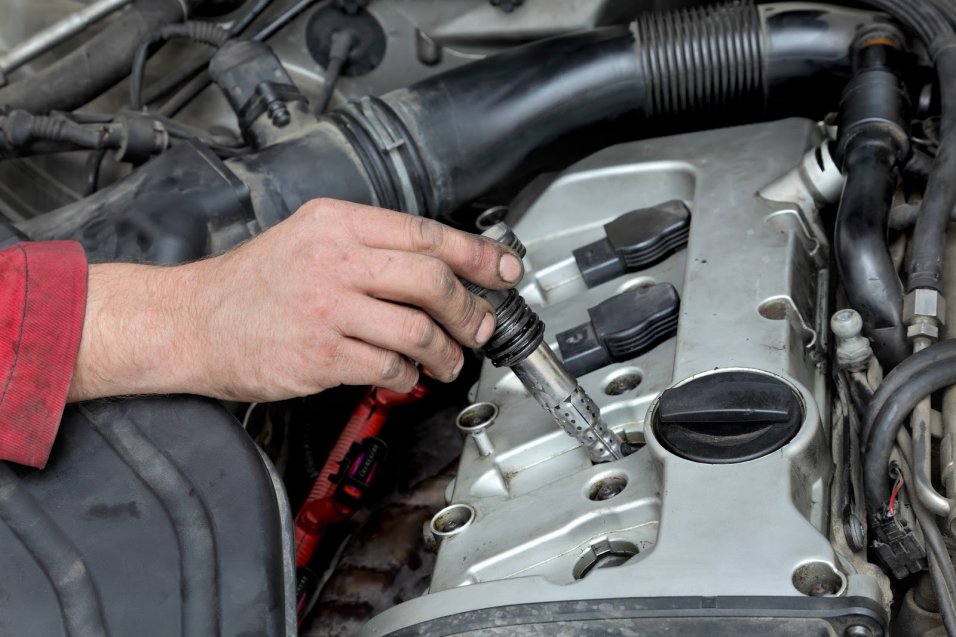Common solutions for ignition system problems include checking and replacing spark plugs, inspecting and replacing ignition coils, examining the ignition switch, and troubleshooting the battery and fuel system. Ignition problems can often be resolved by performing regular maintenance and addressing any faulty components in the system.
A well-maintained ignition system is crucial for the proper functioning of any vehicle or machinery. Ignition problems can lead to difficulties in starting the engine, poor fuel efficiency, and engine misfires. By understanding the common solutions for ignition system problems, you can ensure that your vehicle or equipment runs smoothly and efficiently.
We will explore some of the most effective ways to address ignition system issues and keep your engine running at its best. Whether you are a vehicle owner, mechanic, or someone looking to troubleshoot ignition issues, this guide will provide practical solutions for optimizing your ignition system’s performance.
Common Ignition System Problems
When it comes to keeping your car running smoothly, addressing common ignition system problems is crucial. By understanding these issues and their solutions, you can prevent potential car troubles and ensure your vehicle’s optimal performance.
Faulty Spark Plugs
Spark plugs are an integral part of your car’s ignition system, responsible for creating the spark that ignites the air-fuel mixture in each engine cylinder. Over time, spark plugs can become worn or coated with deposits, leading to a weaker spark or misfiring. Replacing spark plugs at regular intervals is essential to maintain efficient ignition and prevent performance issues. Additionally, keeping an eye out for symptoms such as rough idling or difficulty starting the engine can indicate a need for spark plug replacement.
Weak Battery
A weak or failing battery can also cause ignition problems. The battery provides the electrical energy needed to start the engine and power the ignition system. If the battery is weak, it may not provide enough power to fully engage the ignition system, leading to starting difficulties or stalling. Regularly testing the battery’s voltage and ensuring proper maintenance can help prevent potential ignition issues related to battery performance.
Credit: medium.com
Diagnosing Ignition System Issues
When your car’s ignition system malfunctions, it can lead to frustrating issues such as difficulty starting the engine or engine misfires. Common solutions for these problems involve checking and replacing faulty spark plugs, ignition coils, or the ignition control module.
Regular maintenance can help prevent ignition system issues and ensure smooth vehicle operation.
Check For Spark
An essential step in diagnosing ignition system issues is to check for spark. This can be done using a spark tester, which is connected to the spark plug wire while the engine is cranked. If a strong, blue spark is observed, it indicates that the ignition system is functioning properly. However, if the spark is weak or nonexistent, it indicates potential issues within the ignition system that need to be addressed.
Battery Health Test
Another crucial aspect in diagnosing ignition system problems is to conduct a battery health test. A healthy battery is essential for the ignition system to operate effectively. By using a multimeter, the voltage of the battery can be measured, ensuring it meets the manufacturer’s specifications. Additionally, testing the battery’s cranking amps will help determine if it can provide the necessary power for the ignition system to function optimally.
Common Solutions
Replacing Spark Plugs
Inspect and replace spark plugs to maintain proper ignition.
Charging Or Replacing The Battery
Ensure battery is charged or replaced to avoid ignition issues.
Credit: barrysautobody.com
Advanced Solutions
When dealing with ignition system problems, there are some more advanced solutions you can try out. These solutions go beyond the basic troubleshooting steps and may require more technical knowledge or specialized equipment. Here are a couple of advanced solutions you can consider:
Testing Ignition Coil
An ignition coil plays a crucial role in the ignition system, transforming the low voltage from the battery into high voltage needed to create a spark. As ignition coils can fail over time, testing them can help pinpoint the root cause of your ignition system problem.
To test the ignition coil, you can follow these steps:
- Disconnect the ignition coil wire from the distributor cap.
- Using an ohmmeter, measure the resistance of the ignition coil’s primary and secondary windings.
- The resistance value will vary depending on the make and model of your vehicle, so refer to the manufacturer’s specifications for the correct values.
- If the resistance values fall outside the recommended range, it may indicate a faulty ignition coil that needs to be replaced.
Inspecting Ignition Switch
The ignition switch is another component of the ignition system that can cause problems if it malfunctions. To inspect the ignition switch, you can perform the following steps:
- Locate the ignition switch, typically found on the steering column or dashboard.
- Check for any signs of physical damage, such as loose connections, frayed wires, or burnt components.
- Using a multimeter set to the continuity or resistance mode, test the switch for proper functionality.
- A properly functioning ignition switch should have continuity or low resistance when the key is turned to the “ON” position and no continuity or high resistance when the key is turned to the “OFF” position.
- If the ignition switch fails the continuity or resistance test, it may need to be replaced to resolve the ignition system problem.
By testing the ignition coil and inspecting the ignition switch, you can go beyond the basic troubleshooting steps and identify potential issues in your ignition system. These advanced solutions can help you diagnose the root cause of the problem more accurately, leading to effective repairs and smoother operation of your vehicle.
Preventative Maintenance
Preventative maintenance for ignition system problems includes regular spark plug replacement, checking and replacing ignition coils, and maintaining clean fuel injectors. It is essential to keep the ignition system in good condition to prevent starting issues and engine misfires. Regular maintenance can increase the longevity of the ignition system and prevent costly repairs.
Preventative maintenance is essential for ensuring the smooth functioning of the ignition system. Regular tune-ups and battery maintenance are two key aspects that should not be overlooked. By taking proactive measures, you can address potential issues before they escalate into major problems. Let’s take a closer look at these crucial preventative maintenance steps:
Regular Tune-ups
Scheduling regular tune-ups is one of the most effective ways to keep your ignition system in top-notch condition. During a tune-up, a qualified mechanic will inspect and fine-tune critical components, such as the spark plugs, ignition coil, and distributor cap. They will also perform necessary adjustments to ensure optimal performance.
During a tune-up, the mechanic will inspect the spark plugs for signs of wear and tear. If they notice any electrode erosion or excessive carbon buildup, they will replace the spark plugs promptly. A set of fresh spark plugs ensures optimal ignition, which in turn enhances fuel efficiency and reduces the chances of misfiring.
In addition to spark plug replacement, a typical tune-up includes inspecting and adjusting the ignition timing. This process ensures that the combustion process occurs at precisely the right moment, optimizing engine performance and fuel efficiency.
Battery Maintenance
The battery plays a crucial role in the ignition system, powering the starter motor and providing the necessary electrical energy for ignition. To prevent ignition system problems, it’s important to maintain your battery properly.
Regularly inspect the battery terminals and clean them if you notice any corrosion. Corrosion can hinder the flow of electricity, leading to starting issues or a weak spark. Additionally, check the battery’s voltage regularly using a multimeter. If the voltage is consistently low, it’s a sign that your battery may need to be replaced.
Avoid leaving your vehicle’s accessories on for prolonged periods without the engine running, as this can drain the battery. If your car sits idle for long periods, it may be beneficial to invest in a battery tender or trickle charger to keep the battery charged and healthy. This is especially important during colder months, as low temperatures can decrease battery performance.
By following these preventative maintenance steps, you can minimize the chances of ignition system problems and ensure reliable and efficient vehicle operation. Keeping your ignition system in optimal condition will not only save you from unexpected breakdowns but also extend the lifespan of your vehicle’s engine.

Credit: www.ymfcarparts.co.uk
Frequently Asked Questions On What Are Common Solutions For Ignition System Problems?
How Do You Fix An Ignition Problem?
To fix an ignition problem, first, check if the key is damaged or dirty. Next, ensure the key is fully inserted and in the correct position. If the issue persists, consult a professional auto mechanic to diagnose and resolve the problem.
How Do You Start A Car With An Ignition Problem?
To start a car with an ignition problem, try turning the key while gently jiggling it. Check the battery, starter, and fuses as well. If needed, seek professional help.
What Is The First Step In Diagnosing An Ignition System Problem?
The first step in diagnosing an ignition system problem is to check the spark plugs.
How Do You Troubleshoot Points On An Ignition System?
To troubleshoot points on an ignition system, check for loose connections, worn-out or damaged points, and check if the ignition coil is functioning properly. Ensure the timing is set correctly, and clean or replace any corroded parts. Test the spark plugs and wires for any faults and replace if necessary.
Conclusion
Ensuring your ignition system is well-maintained is vital for optimal vehicle performance. By addressing common problems promptly, you can prevent further issues and maintain your safety on the road. Regular inspections and timely repairs will keep your vehicle running smoothly and efficiently.
Prioritizing ignition system maintenance is key.
